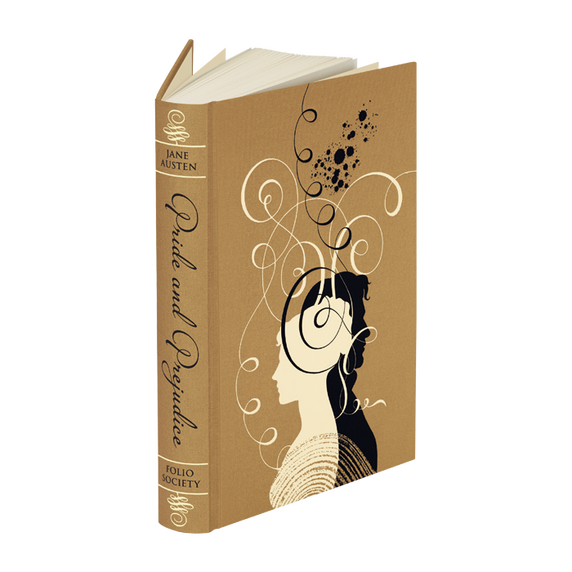
Both a sparkling comedy of manners and a gripping romance, Pride and Prejudice remains one of the best-loved books in the world.
A Study of Provincial Life
Illustrated by Pierre Mornet
Introduced by John Mullan
George Eliot’s Middlemarch is an ambitious account of a fast-changing world. The new Folio Society edition is an exquisite production of one of the greatest English novels in history.
‘It is one of those books that expands and grows greater in its readers’ minds with each reading.’
- Independent
George Eliot’s sweeping story of a manufacturing town and its inhabitants is widely acknowledged to be her masterpiece and is considered to be one of the greatest English novels. A compelling exploration of social change and human nature, Middlemarch is the most requested title on our website and our edition is an ambitious production that reflects its literary significance.
Bound in blocked cloth
Set in Caslon
768 pages
Frontispiece and 14 colour illustrations
Printed endpapers
Blocked cloth slipcase
11˝ x 7 ¼˝
Set in the early 1830s, as small town and rural certainties make way for industrial and political transformations, Eliot interweaves the lives of an entire community. At the heart of the book are Dorothea Brooke, a wealthy young woman with ambitions beyond her station, and Dr Tertius Lydgate, who believes he can effect change through the results of his research. The dreams of both are thwarted, as they make unwise marriage choices and must deal with the life-changing consequences of their actions through personal sacrifice and soul-searching.
Eliot pushed the boundaries of expectation for female writers at the time, refusing to conform to the flighty romance and happy endings of her peers’ publications. Middlemarch offers a lament for the limited options available to women in late Regency England, alluding to their lost potential and unrealised dreams. But it also tackles themes including morality, social mobility and industrialisation. Ultimately, the human condition is at the mercy of the rapidly changing world.
Miss Brooke had that kind of beauty which seems to be thrown into relief by poor dress.
Our exceptional large-format collector’s edition is a fitting celebration of this monumental work. Renowned French artist Pierre Mornet painted Eliot’s portrait for the New Yorker and his 15 striking illustrations for our edition blend realism and subtle stylisation. For the introduction we commissioned 18th-century literature expert Professor John Mullan, who offers a fresh perspective on the novel. The blocked binding frames a silhouette of Dorothea, and the binding’s floral motif is echoed on the slipcase.
George Eliot was the pen name of the novelist Mary Anne Evans. Born in 1819 in rural Warwickshire, in 1841 she moved to Coventry, the city she would later use as inspiration for the fictional town of Middlemarch. There she joined a circle of free-thinking intellectuals and lost her Christian faith. After a period abroad, she settled in London to work as an editor at the left-wing Westminster Review. Eliot openly co-habited with the married philosopher and critic George Henry Lewes in defiance of contemporary notions of propriety. Lewes encouraged her to write fiction, for which she adopted her male pseudonym. Her first Warwickshire-set tales appeared in Blackwood’s Magazine from 1857; they were published as Scenes of Clerical Life in 1858. Adam Bede followed in 1859 and The Mill on the Floss in 1860. She published three more novels in the following decade, including Silas Marner (1861), as well as some poetry. Her most famous book, Middlemarch, was published in eight instalments between 1871 and 1872.
John Mullan is Lord Northcliffe Professor of English at University College London. He has published widely on 18th- and 19th-century literature, and has edited works by Defoe and Johnson. His most recent book is What Matters in Jane Austen? (2012). He is also a broadcaster and journalist, and writes on contemporary fiction for the Guardian. He is the author of How Novels Work (2006) and in 2009 was one of the judges for the Man Booker Prize. He has recently finished a new edition of Austen’s Sense and Sensibility and is completing a book on Dickens’s fictional innovations.
Pierre Mornet is a French illustrator who lives and works in Paris. After completing studies in graphic design at ESAG Penninghen, he turned to full-time illustration. Regularly commissioned by major press titles such as the New Yorker, the New York Times, the Washington Post, Libération, Le Monde, Citizen K and Vogue Japan, he is also popular for his book jacket designs, particularly in France, the United States, Japan and Italy, and he works regularly with fashion and perfume brands including Prada and Flower by Kenzo. Mornet has illustrated four books for young people, among them L’anniversaire (2013) for which he also wrote the text.
